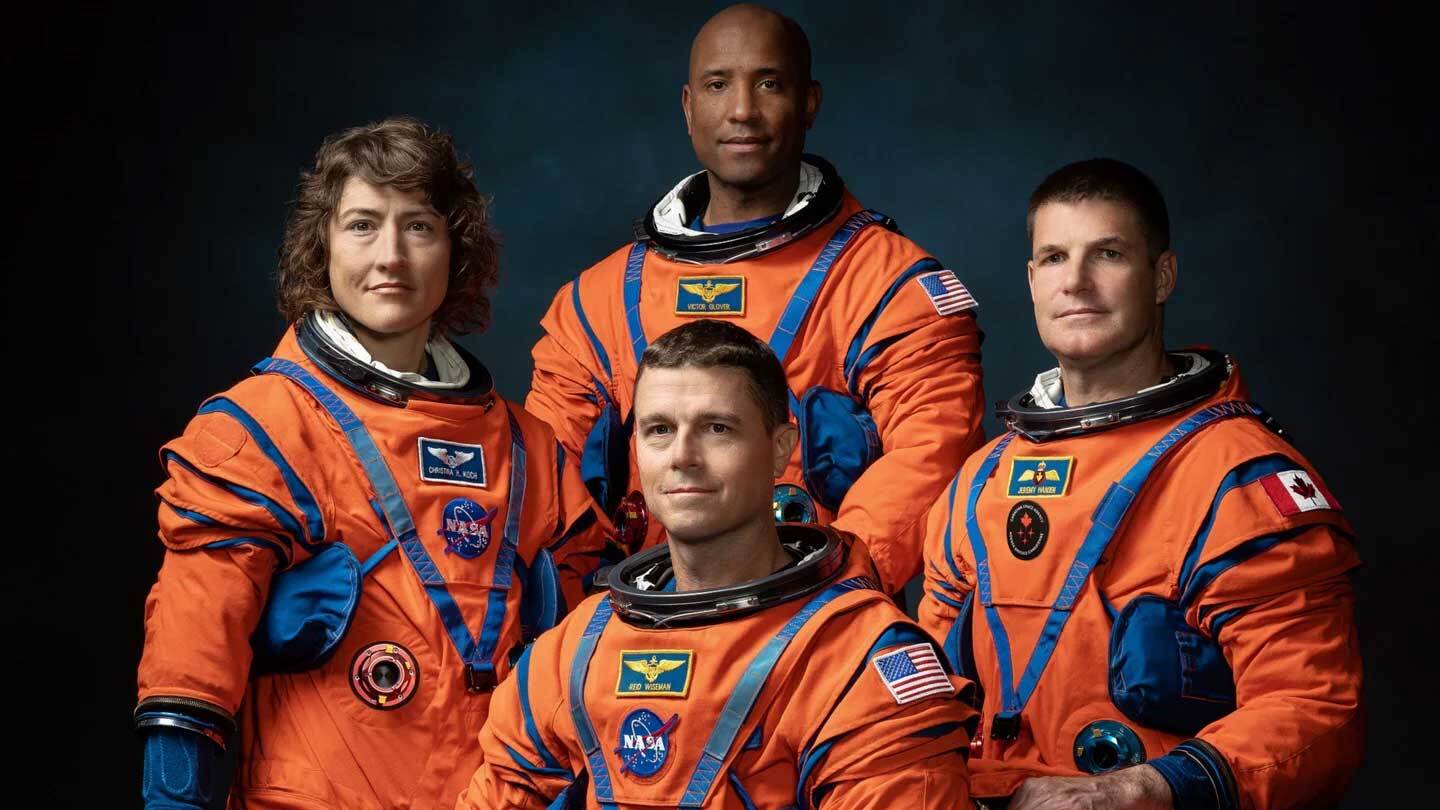

Years after Apollo 17 commander Eugene Cernan returned from NASA’s last crewed mission to the moon, he still felt the massive weight of the milestone. “I realize that other people look at me differently than I look at myself, for I am one of only 12 human beings to have stood on the moon,” he wrote in his autobiography. “I have come to accept that and the enormous responsibility it carries, but as for finding a suitable encore, nothing has ever come close.”
Cernan, who died in 2017, and his crewmates will soon be joined in their lonely chapter of history by four new astronauts, bringing the grand total of people who’ve flown to the moon to 28. Today, NASA and the Canadian Space Agency announced the crew for Artemis II, the first mission to take humans beyond low-Earth orbit since Apollo 17 in 1972. The 10-day mission will take the team on a gravity-assisted trip around the moon and back.

The big reveal occurred at Johnson Space Center in Houston, Texas, in front of an audience of NASA partners, politicians, local students, international astronauts, and Apollo alums. NASA Director of Flight Operations Norman Knight, NASA Chief Astronaut Joe Acaba, and Johnson Space Center Director Vanessa White selected the crew. They were joined on stage during the announcement by NASA Administrator Bill Nelson and Canada’s Minister of Innovation, Science, and Industry Francois-Philippe Champagne.
“You are the Artemis generation,” Knight said after revealing the final lineup. “We are the Artemis generation.” These are the four American and Canadian astronauts representing humanity in the next lunar launch.
Christina Koch – Mission Specialist, NASA
Koch has completed three missions to the International Space Station (ISS) and set the record for the longest spaceflight for a female astronaut in 2020. Before that, the Michigan native conducted research at the South Pole and tinkered on instruments at the Goddard Flight Space Center. She will be the only professional engineer on the Artemis II crew. “I know who mission control will be calling when it’s time to fix something on board,” Knight joked during her introduction.
Koch relayed her anticipation of riding NASA’s Space Launch System (SLS) on a lunar flyby and back to those watching from home: “It will be a four-day journey [around the moon], testing every aspect of Orion, going to the far side of the moon, and splashing down in the Atlantic. So, am I excited? Absolutely. But one thing I’m excited about is that we’re going to be carrying your excitement, your dreams, and your aspirations on your mission.”
[Related: ‘Phantom’ mannequins will help us understand how cosmic radiation affects female bodies in space]
After the Artemis II mission, Koch will officially be the first woman to travel beyond Earth’s orbit. Koch and her team will circle the moon for 6,400 miles before returning home.
Jeremy Hansen – Mission Specialist, Canada
Hansen’s training experience has brought him to the ocean floor off Key Largo, Florida, the rocky caves of Sardinia, Italy, and the frigid atmosphere above the Arctic Circle. The Canadian fighter pilot led ISS communications from mission control in 2011, but this will mark his first time in space. Hansen is also the only Canadian who’s ever flown on a lunar mission.
“It’s not lost on any of us that the US could go back to the moon by themselves. Canada is grateful for that global mindset and leadership,” he said during the press conference. He also highlighted Canada’s can-do attitude in science and technology: “All of those have added up to this step where a Canadian is going to the moon with an international partnership. Let’s go.”
Victor Glover – Pilot, NASA
Glover is a seasoned pilot both on and off Earth. Hailing from California, he’s steered or ridden more than 40 different types of craft, including the SpaceX Crew Dragon Capsule in 2020 during the first commercial space flight ever to the ISS. His outsized leadership presence in his astronaut class was mentioned multiple times during the event. “In the last few years, he has become a mentor to me,” Artemis II commander Reid Wiseman said.
[Related on PopSci+: Victor J. Glover on the cosmic ‘relay race’ of the new lunar missions]
In his speech, Glover looked into the lofty future of human spaceflight. “Artemis II is more than a mission to the moon and back,” he said. “It’s the next step on the journey that gets humanity to Mars. We have a lot of work to do to get there, and we understand that.” Glover will be the first Black astronaut to travel to the moon.
G. Reid Wiseman – Commander, NASA
Wiseman got a lot done in his single foray into space. During a 2014 ISS expedition, he contributed to upwards of 300 scientific experiments and conducted two lengthy spacewalks. The Maryland native served as NASA’s chief astronaut from 2020 to 2022 and led diplomatic efforts with Roscosmos, Russia’s space agency.
“This was always you,” Knight said while talking about Wiseman’s decorated military background. “It’s what you were meant to be.”
Flight commanders are largely responsible for safety during space missions. As the first astronauts to travel on the SLS rocket and Orion spacecraft, the Artemis II crew will test the longevity and stability of NASA and SpaceX’s new flight technology as they exit Earth’s atmosphere, slingshot into the moon’s gravitational field, circumnavigate it, and attempt a safe reentry. Wiseman will be in charge of all that with the support of his three fellow astronauts and guidance from mission control.
